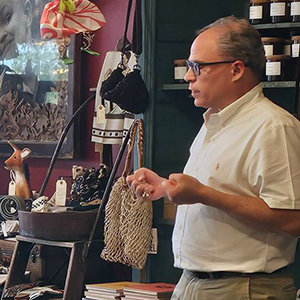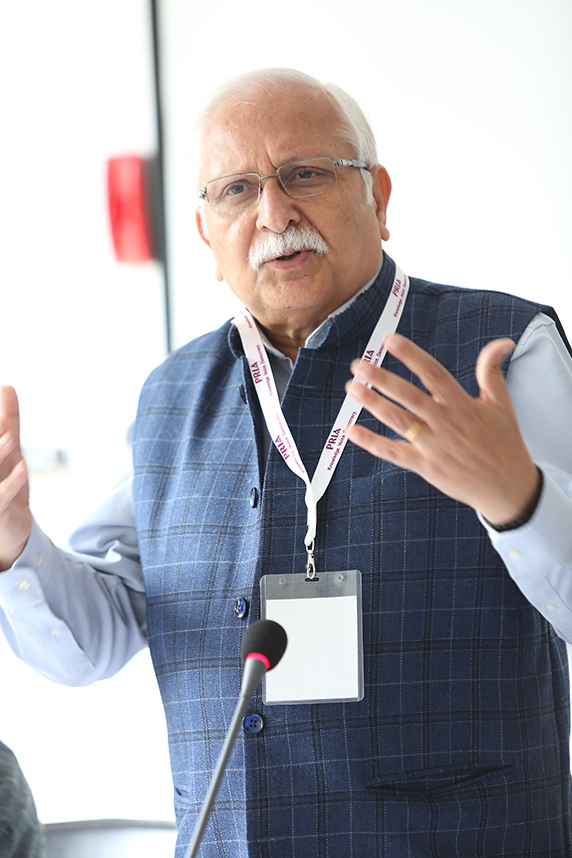 Tandon was one of the key organizers of the workshop. (Photo courtesy of PRIA)
Tandon was one of the key organizers of the workshop. (Photo courtesy of PRIA)A workshop in New Delhi Feb. 26-28 focused on involving local community members in studies aimed at reducing the burden of diseases from chemicals in the environment.
NIEHS grantees at the University of Iowa (UI) partnered with Rajesh Tandon, Ph.D., the founder and president of Participatory Research in Asia (PRIA), to offer “Advancing Environmental Health Research and Translation in India Through Community-Based Participatory Research [CBPR] Methodology.”
NIEHS Director of Extramural Research and Training Director Gwen Collman, Ph.D., welcomed attendees and discussed environmental health topics and research methods. The UI College of Public Health was represented by Dean Edith Parker, Dr.P.H., and Nicole Novak, Ph.D., assistant research scientist.
Adapting methods, partnering in research
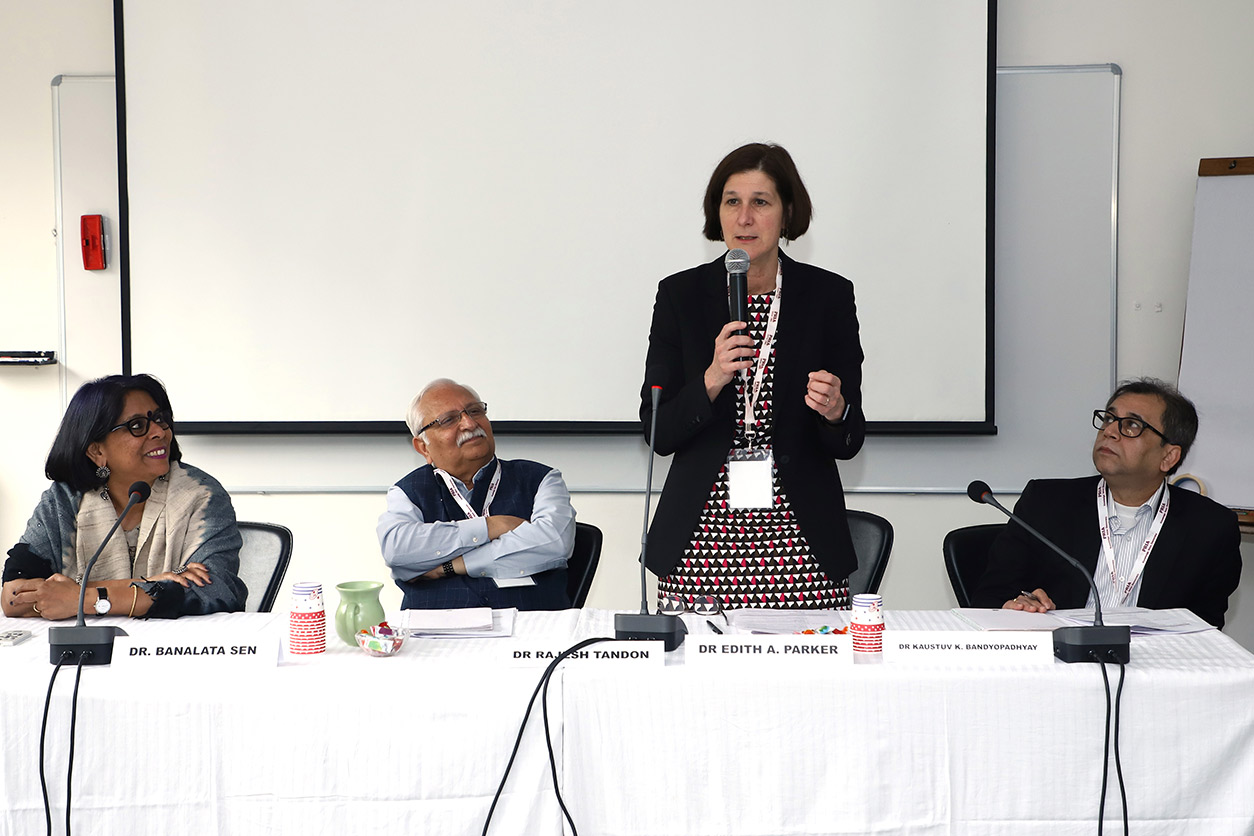 Parker, standing, discussed areas of potential partnership. She was joined by, from left, independent researcher Banalata Sen, Ph.D., formerly of NIEHS; Tandon; and Kaustuv Bandyopadhyay, Ph,D., director of PRIA. (Photo courtesy of PRIA)
Parker, standing, discussed areas of potential partnership. She was joined by, from left, independent researcher Banalata Sen, Ph.D., formerly of NIEHS; Tandon; and Kaustuv Bandyopadhyay, Ph,D., director of PRIA. (Photo courtesy of PRIA)The workshop brought together U.S. and Indian researchers and practitioners with expertise and interest in participatory research approaches. Speakers discussed air pollution, pesticide exposure, environmental disasters, and how CBPR methods used in the United States might be adapted for India.
Parker said that in addition to encouraging the application of CBPR methods in Indian environmental health research projects, one objective of the workshop was to identify potential research partnerships to link Indian and U.S. professionals.
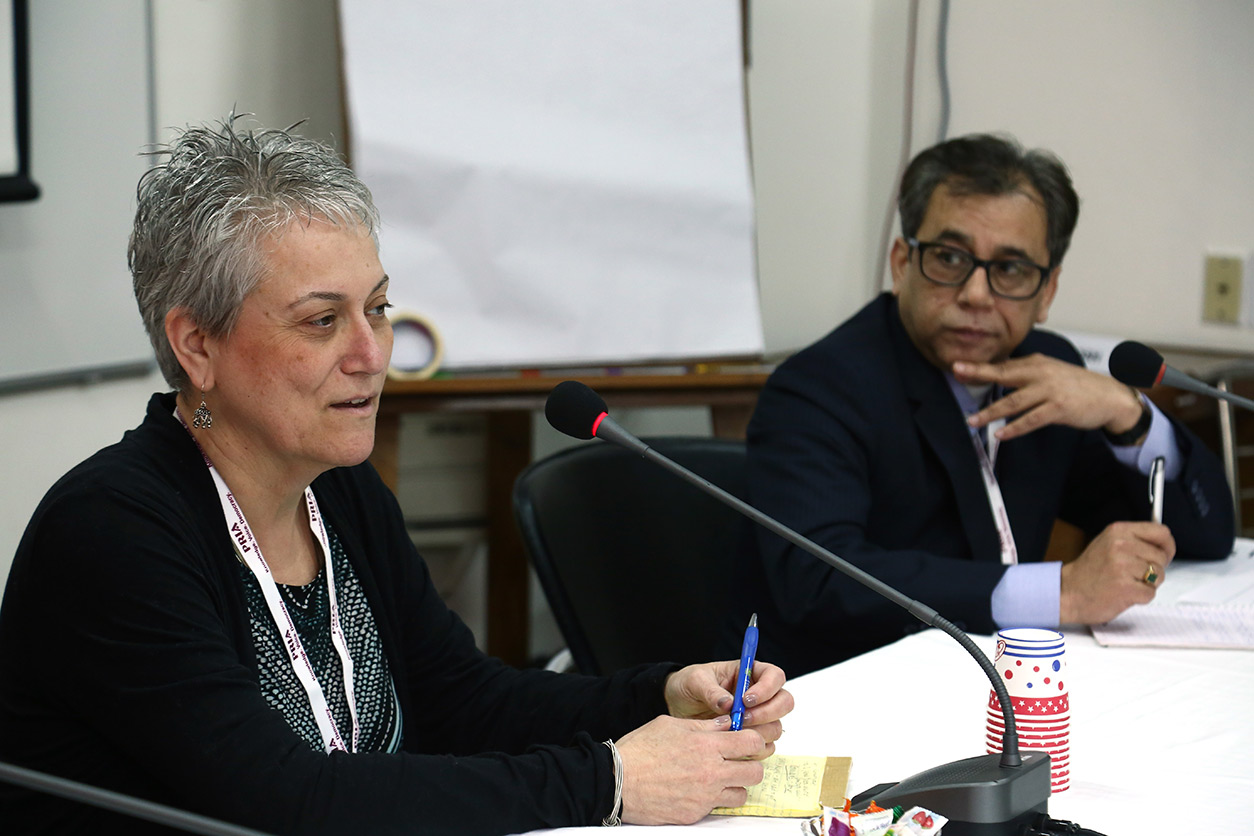 Collman, left, is shown with Bandyopadhyay. (Photo courtesy of PRIA)
Collman, left, is shown with Bandyopadhyay. (Photo courtesy of PRIA)Building environmental health into CBPR
“India has some of the world’s foremost leaders in participatory research methods, and also several talented researchers in the area of environmental health,” said Parker. “But a CBPR approach is not used as often in the area of environmental health in India as it is in the U.S. Through our collaborative ties, we hope to be able to bring these areas of strength together in the field of environmental health research and for the benefit of population health.”
The meeting concluded with a public presentation on potential uses of CBPR in India, moderated by Preetha Rajaraman, Ph.D., who serves as the U.S. Department of Health and Human Services health attache at the U.S. Embassy in New Delhi.
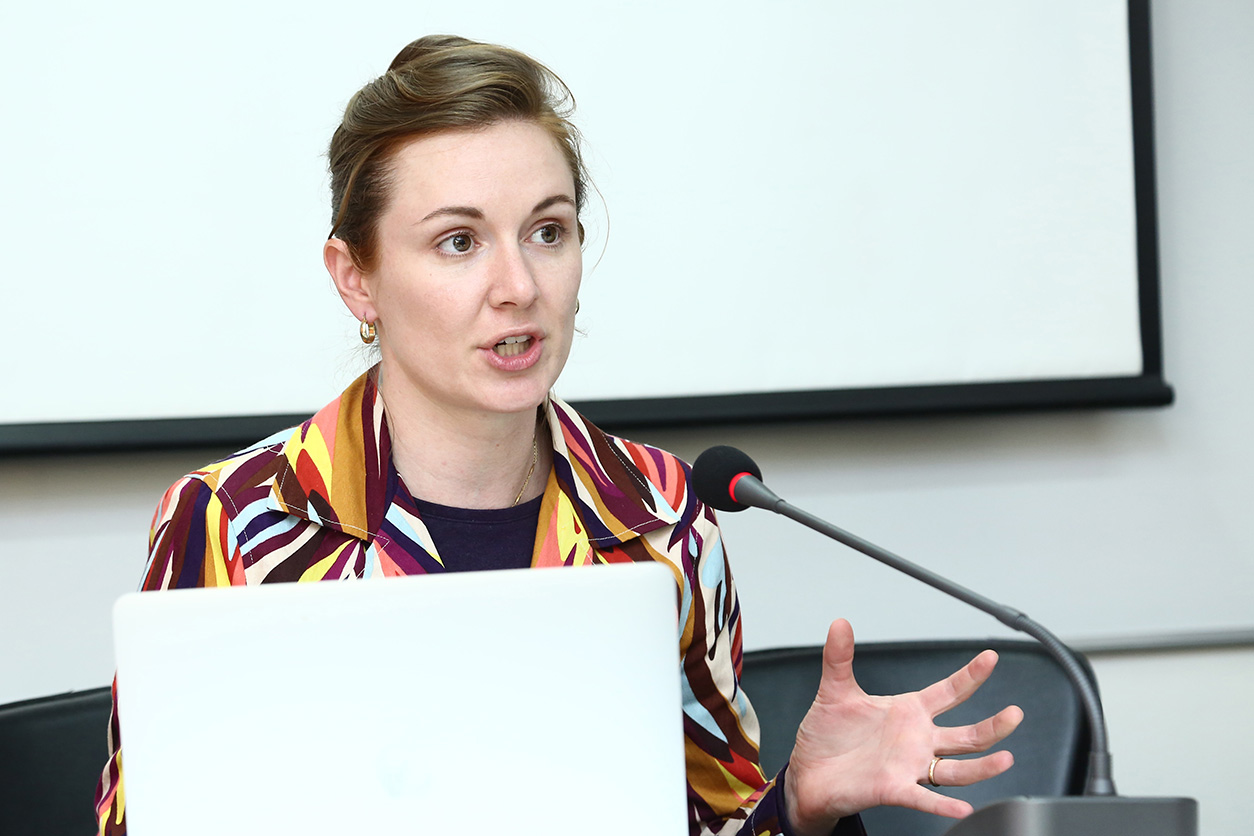 Novak is an assistant research scientist with the UI College of Public Health. (Photo courtesy of PRIA)
Novak is an assistant research scientist with the UI College of Public Health. (Photo courtesy of PRIA)More about the workshop and participants can be found online. Funding for the workshop was provided by the Indo-U.S. Science and Technology Forum and NIEHS.
(Dan McMillan is the director of Communications and External Relations at the UI College of Public Health. This story first appeared on the UI College of Public Health News page.)





